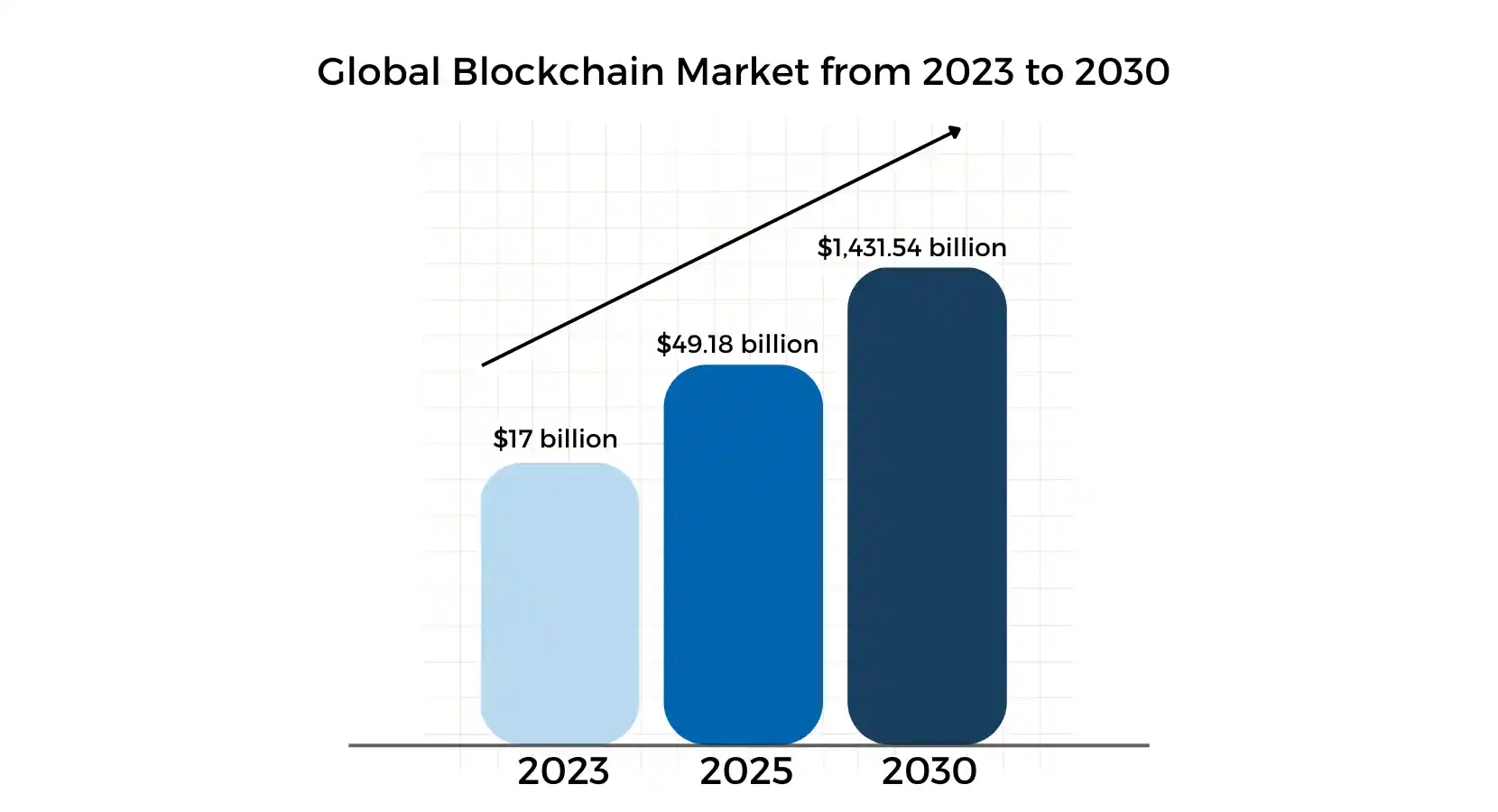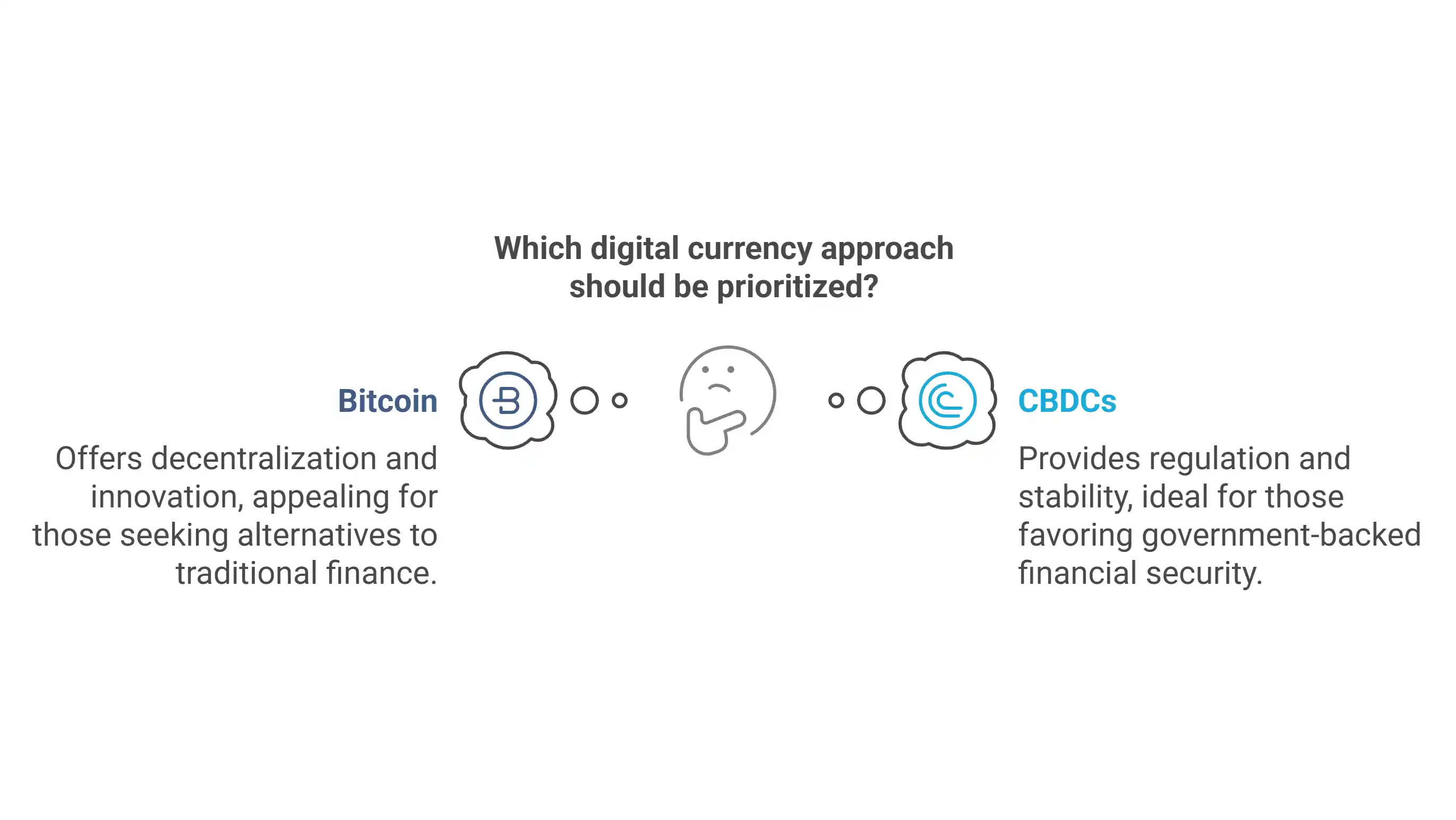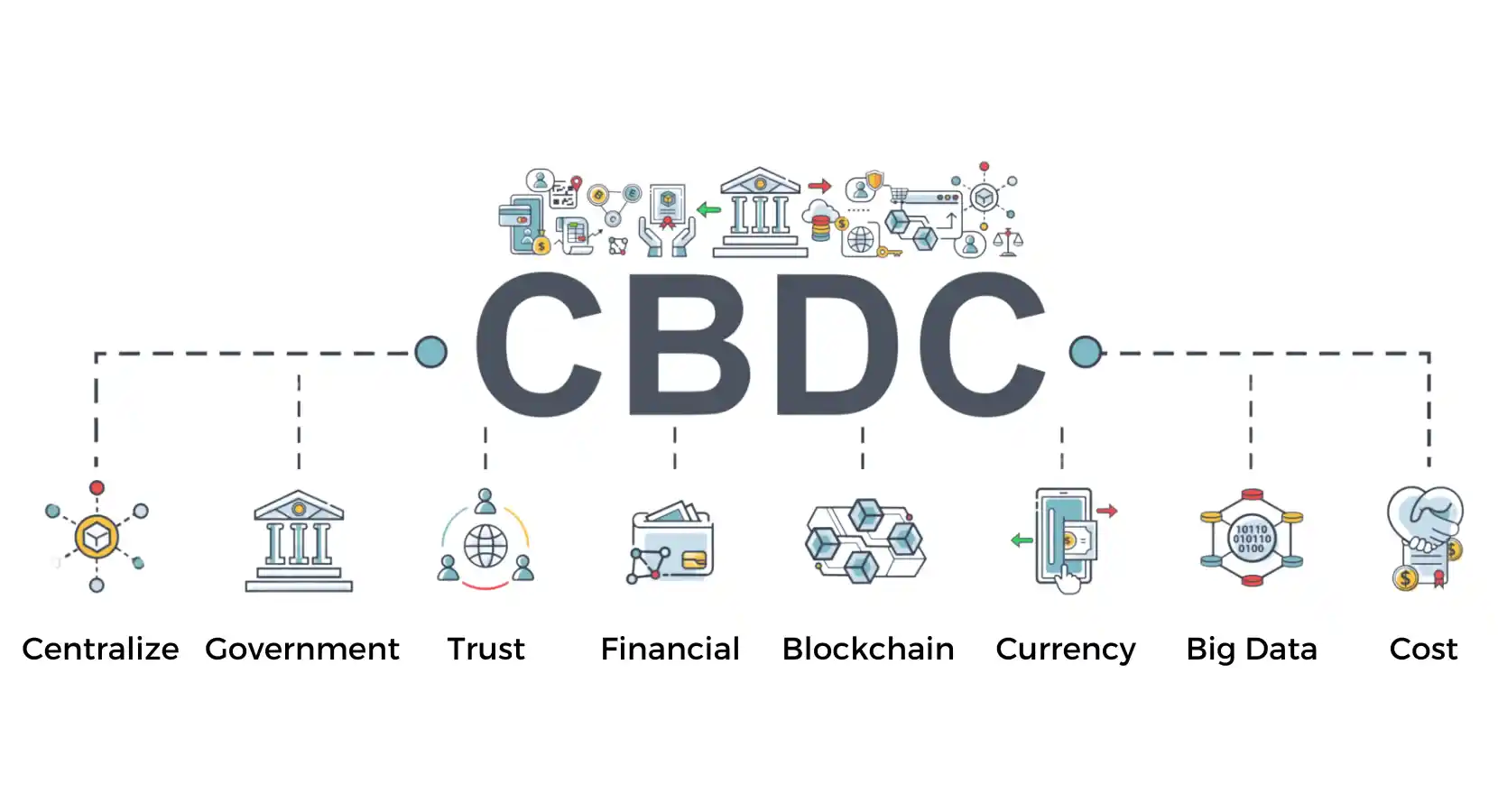Table of Contents
Blockchain technology is indeed changing the face of finance drastically. From Bitcoin to CBDCs, this shift from the traditional banking model to decentralized and digital financial systems promises more security, efficiency, and inclusiveness. While it was Bitcoin that introduced the concept of decentralized digital currencies, CBDCs are now bringing blockchain technology into the mainstream financial systems.
This article explains how Bitcoin to CBDCs is reshaping finance, what they bring along, the benefits, and the challenges that it holds for global economies in the future.

The Journey from Bitcoin to CBDCs: A Financial Revolution
This journey from Bitcoin to CBDCs started with the launch of Bitcoin in 2009. It is a decentralized currency that bypasses middlemen; hence, its nature interrupted the previously mainstream financial models as it allows peer-to-peer transactions with blockchain technology ensuring security. Its success motivated the development of thousands of cryptocurrencies, each claiming to better improve on this basic foundation laid by Bitcoin.
The skepticism of governments and financial institutions regarding cryptocurrencies soon faded as they saw the potential in blockchain technology. The emergence of Bitcoin and other DeFi solutions challenged central banks, which pushed them to come up with digital alternatives that allow them to control while integrating the benefits of blockchain. This has led to the development of CBDCs-state-backed digital currencies designed to modernize traditional banking systems while retaining regulatory oversight.
Why Bitcoin to CBDCs Represents a Paradigm Shift
The shift from Bitcoin to CBDCs is a significant shift in how we think about and use money. While Bitcoin is decentralized and operates outside of government control, giving the user freedom to use their financial resources, CBDCs are centralized digital assets controlled by central banks. But both share a common foundation: blockchain technology.
Here’s why this transition is revolutionary:
1. Financial Inclusion for the Unbanked
Both Bitcoin and CBDCs bring financial inclusion as their most important benefit. Bitcoin provides banking services to people in countries with weak financial systems, while CBDCs can offer government-backed financial services to the remote and underbanked. This change will ensure that the unbanked can access digital financial services in a secure manner.
2. Enhanced Security and Transparency
Blockchain technology is immutable and transparent. The use of Bitcoin results in recording its transactions on a public ledger that minimizes fraud and manipulation. CBDCs also ensure that the risk of counterfeiting and unauthorized transactions is minimal, hence providing improved security. As such, blockchain’s security feature is what makes governments and financial institutions believe in digital currencies.
3. Faster and Cost-Effective Transactions
Traditional financial transactions, especially cross-border payments, take days and are expensive. Bitcoin allows for near-instant transactions at lower costs, making it a preferred choice for global remittances. CBDCs aim to replicate this efficiency, allowing central banks to streamline domestic and international transactions without relying on intermediaries.
4. Regulatory Control vs. Decentralization
The most critical difference between Bitcoin and CBDCs is control. Bitcoin is decentralized, which means no central authority controls the transactions. This gives users financial sovereignty but at the same time raises concerns over illegal activities. In contrast, CBDCs allow central banks to implement monetary policies effectively and ensure financial stability while maintaining transparency and compliance with regulations.

Challenges in the Adoption of Bitcoin to CBDCs
Despite the revolutionary potential of Bitcoin to CBDCs, several challenges must be addressed to ensure seamless adoption and integration into the global financial system.
1. Privacy Concerns and Government Oversight
While Bitcoin can provide anonymity and decentralization, CBDC requires the user to operate within a regulated framework that raises privacy concerns. The balance between transparency and user privacy should be achieved so that it does not deter mass adoption.
2. Technological and Infrastructure Barriers
The infrastructure of CBDC is costly in terms of technology, cybersecurity, and digital literacy. Technologically undeveloped countries cannot effectively launch CBDCs.
3. Competition Between Cryptocurrencies and CBDCs
Bitcoin and CBDC are two different systems for financial thought. While bitcoin proponents support decentralization and financial freedom, the CBDC ensures stability and the government’s assurance. The battle between these two systems will shape the future of digital finance.
4. Cybersecurity Risks and Fraud Prevention
Bitcoin and CBDCs are digital assets. Thus, there is a possibility of cyber risks, and the government and financial institutions need to be equipped with proper security measures to avoid hacking, fraud, and digital identity theft.
The Future: A Harmonious Coexistence?
Bitcoin to CBDCs does not have to be a struggle between decentralized and centralized financial systems. Instead, they can be complementary to one another. The governments and the financial institutions are exploring hybrid models where Bitcoin and other cryptocurrencies can function as alternative investment assets and CBDCs can be used as the backbone of digital financial ecosystems.
As adoption increases, financial institutions are incorporating Bitcoin into their services. This allows users to buy, sell, and store cryptocurrencies along with CBDCs. In this hybrid approach, users can enjoy the flexibility of Bitcoin and the stability of CBDCs.

Conclusion
Blockchain technology is changing the financial world at an unprecedented rate, from Bitcoin to CBDCs. Bitcoin symbolizes freedom in finance and decentralization, whereas CBDCs are the future of state-backed digital currencies with regulatory oversight. Together, they are transforming the way money is created, stored, and exchanged.
The future course will have to involve collaboration from financial institutions, governments, and technology providers to overcome the challenges that beset the blockchains to unlock the full power of blockchain-driven digital finance. Whether a cryptocurrency enthusiast or a proponent of government-backed digital currencies, one thing is amply evident: blockchain is revolutionising finance, and the journey from Bitcoin to CBDCs has only just started.
READ MORE:
Top 30 AI Companies in India to Know About in 2025
Decentralized Finance (DeFi): The Powerful Innovation Driving Banking Evolution